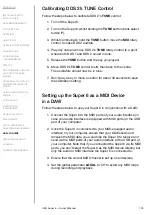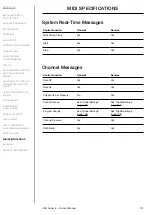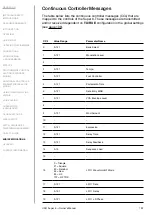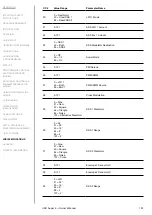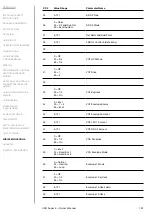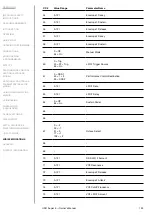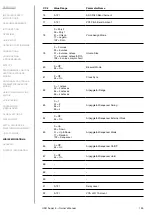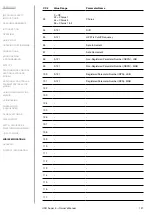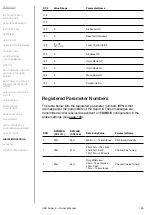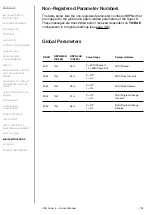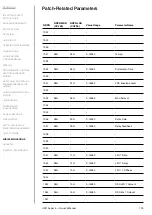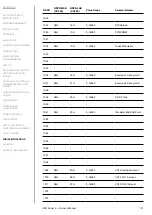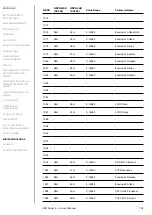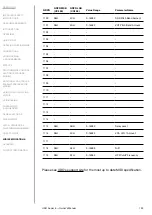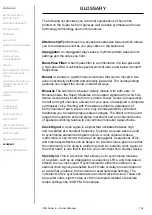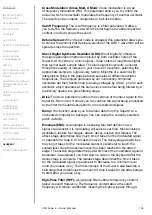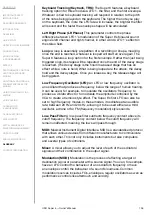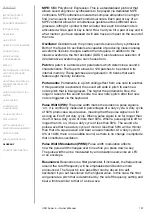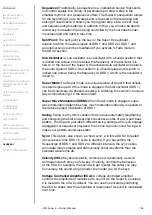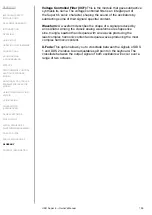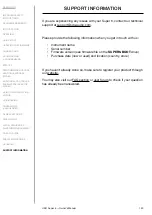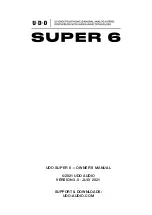
UDO Super 6 — Owner’s Manual
134
GLOSSARY
The following list provides you with brief explanations of key terms
printed on the Super 6’s front panel as well as basic synthesis and music
technology terminology used in this manual.
Aftertouch (AT):
Aftertouch is a keyboard expression feature which allows
you to modulate a sound as you play notes on the keyboard.
Arpeggiator:
An arpeggiator plays back a rhythmic pattern based on its
settings and the notes you hold.
Band-Pass Filter: A band-pass filter is a combination of a low-pass and
a high-pass filter. It subtracts spectral content above and below its cutoff
frequencies.
Bender:
A bender is a performance controller that can be moved in two
axes; horizontally (left/right) and vertically (upwards). The corresponding
gestures can impact the sound in individual ways.
Binaural:
The Latin term ‘binaural’ literally means ‘with both ears’. In
Binaural mode, the Super 6 features a true stereo signal path in which its
twelve voices are twinned to form six stereo ‘Super’ voices. Consequently,
the left and right channels, and each of your ears, are assigned a complete
synthesizer voice. Starting with the stereo oscillators, parameters of
both channels of each ‘super voice’ may be independently controlled,
facilitating you to create gorgeous stereo images. The effect on the sound
ranges from subtle to extreme stereo movement and an enhanced sense
of spatial positioning relative to conventional monaural signal-chains.
Clock Signal:
A clock signal is a signal that oscillates between high
and low states at a constant frequency. Typically, a square wave is used
to synchronise elements of digital circuits. A clock signal acts like a
metronome. It can control the rate of an arpeggiator, a sequencer, LFOs,
and time-based effects such as delays. An internal clock signal is one that
the instrument you’re using is producing itself. An external clock signal, on
the other hand, is one that is fed into your instrument from another device.
Clock Sync:
This is a function that allows you to synchronise modules
of a system, such as an arpeggiator, a sequencer, LFOs, and time-based
effects, to one clock signal. If synchronised to either the internal or an
external clock signal, parameters like LFO rate or delay time will respond
at a rate that is relative to the internal or external tempo settings. The
increments of the synchronised rate are called clock divisions. These can
be quarter notes, eighth notes or 16th note triplets instead of absolute
tempo settings like 120 BPM, for example.
Summary of Contents for SUPER 6
Page 142: ......

